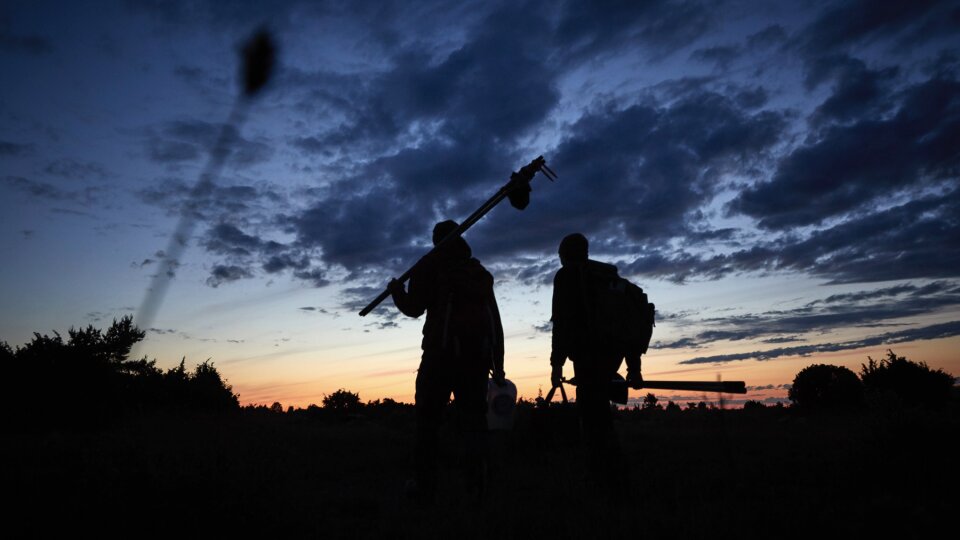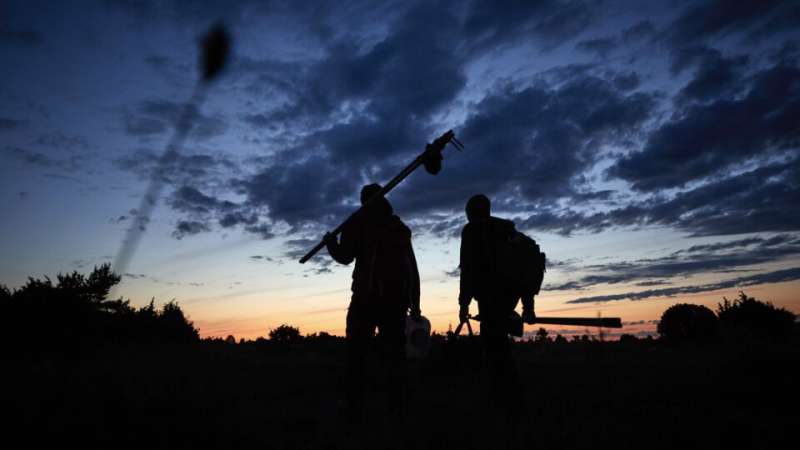

Different species of migrating bird have different genetically programmed procedures that signal when it is time to head off and when it is time to return. It may have to do with factors such as daylight, temperature, weather and the Earth’s magnetic field. These migration programs have been studied before, but new technology and computational capacity make it possible to process large amounts of data and even simulate various factors so that researchers are able to study how their routines are disrupted by changes to the climate and by us.
The birds’ clocks, maps and compasses—Susanne Åkesson, professor of animal ecology, and her research team have several different mechanisms to study. How do the birds know when it is time to move? How do they know where they are going, and what might affect this transfer of information? What triggers their innate knowledge of direction, navigation, time and place?
“We use several different techniques to study wild birds in the field, but also in cages. In the lab, we are able to simulate disruptions such as magnetic storms or other forms of visual information and see how the birds are affected.”
Solar compass, celestial compass and magnetic compass
The way birds migrate is genetically programmed behavior and is specific to each species and its individuals.
“We have long known that they respond to the Earth’s magnetism, but how they regulate this and how they know when they have arrived in the right place is still not clear,” explains Susanne Åkesson.
However, more is known about some species than others. The common swift, which mates in Sweden, flies for nine or ten months in a row. They live on insects which they catch mid-air, and that is how they manage to handle their energy intake while flying. Another example is nightjars, which have a cyclical behavior pattern through the year, in which mating, migration and building fat reserves are governed completely by the phases of the moon. A lot of this has been charted with the help of microdata logs attached to the birds.
Besides the microdata loggers—small digital devices—data is also collected in specially built labs where different small birds are kept in cages for short periods and filmed. Large solenoids enable researchers to control and simulate changes in the Earth’s magnetic field around the cages.
Processing large amounts of data
A special system for weighing makes it possible to estimate the birds’ weight each day, in order to follow how they are laying down fat and preparing to migrate. Thanks to the cameras, researchers are able to follow in detail how the birds move, at what times and in which direction. Most species are nocturnal and migrate at dusk.
“Small birds process a lot of complex information. It is very exciting to be able to compare species using such a lot of detailed data. It helps us to understand more precisely what the birds are doing, how they gather information and how they react to it,” Susanne Åkesson explains.
The lab is also home to a specially designed cylinder, developed on site, which gives the birds the opportunity to eat, sleep and move around. Susanne Åkesson is delighted over the new project with researchers within eSSENCE, Lund University’s strategic research area for e-science which could bring even greater understanding. The researchers want to further develop the technology in order to be able to simulate other situations, such as threats from birds of prey and migration in groups.
Birds’ vulnerability during migration
Some species are more vulnerable than others. While some move together in large flocks, others move one by one, and it is not currently known what influences their decisions. They might also be very dependent on migrating with a parent, and it is usually the father who hands down knowledge of migration routes and preparation.
One species that Susanne and others have studied is the Caspian tern, the world’s largest species of tern. It is found all over the world, but the European population mates in Sweden, Finland and to a certain extent Estonia. The research team has followed family groups and has been able to show how dependent they are on learning their migration route during their first flight, then going on to repeat it throughout their lifetime.
“They migrate over great distances—as far as the Sahel, and may cross the Sahara at altitudes of several thousand meters. Young birds that become separated from their parents are all taken by birds of prey,” Susanne Åkesson continues. “We want to understand more about where the risks emerge and what triggers them.”
This kind of cultural learning is interesting for the researchers, and is also important information for society. Knowledge of different migration programs and how, for example, marine wind farms affect different species may inform decisions as to where it is suitable to build them.
Shared data gives multiple returns in knowledge gains
Susanne Åkesson is also involved in a project in which species are threatened and the situation may be acute, in Tavvavuoma in Sweden’s northernmost Lapland region. Researchers are primarily studying where the waders that breed in that unique area in the far north. Studying their migration programs and where they make stopover is important in order to be able to defend sensitive areas so that their behavior is not altered, or their habitats diminished.
Over the years, many datapoints have been collected and shared data forms the basis of new work by early-career researchers, further deepening their knowledge. There are large international databases in which many research teams store tracking data both from birds and from land animals. One such example is the collaboration with the World Wide Fund for Nature and BirdLife Sverige, in the project Arctic Flyways.
“We need to contribute to reducing conflicts between humans, birds and other animals on the planet. We share habitats and ecosystems with other species and there is so much unknown, valuable knowledge that we lose if we fail to protect them.”
That is why it is such good news that new funds will enable Susanne Åkesson to expand her research and recruit technical know-how from LTH to complement the group over the years ahead. Using new algorithms and machine learning, they hope to get closer to answering the question of how birds synchronize processes within their bodies with the Earth’s magnetic field and length of day, how they calibrate their different compasses during migration and how the migration program varies between species.
Provided by
Lund University
Citation:
AI improving understanding of migratory birds’ internal clock, map and compass (2023, June 29)
retrieved 29 June 2023
from https://phys.org/news/2023-06-ai-migratory-birds-internal-clock.html
This document is subject to copyright. Apart from any fair dealing for the purpose of private study or research, no
part may be reproduced without the written permission. The content is provided for information purposes only.